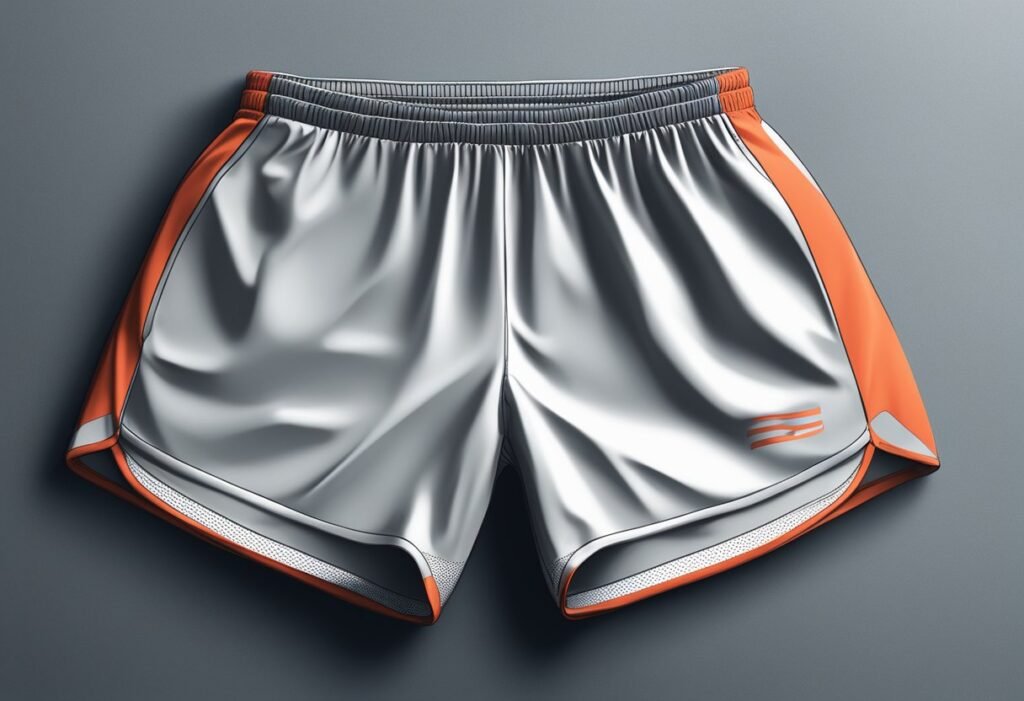Best Materials for Moisture-Wicking Running Shorts A Comprehensive Guide
Moisture-wicking running shorts are a must-have for runners who want to stay comfortable and dry during their workouts. These shorts are designed to pull sweat away from the skin and allow it to evaporate quickly, which helps to regulate body temperature and prevent chafing. However, not all moisture-wicking materials are created equal, and some are more effective than others. In this article, we will explore the best materials for moisture-wicking running shorts and what makes them stand out.
One of the most popular materials for moisture-wicking running shorts is polyester. Polyester is a synthetic fabric that is lightweight, breathable, and quick-drying. It is also durable and resistant to wrinkles, making it a great choice for runners who want a low-maintenance option. Another material that is commonly used for moisture-wicking running shorts is nylon. Nylon is also lightweight and quick-drying, but it is more stretchy than polyester, which can make it more comfortable for some runners. Additionally, nylon is often blended with other materials like spandex to provide additional stretch and support.
Fundamentals of Moisture-Wicking Technology
How Moisture-Wicking Works
Moisture-wicking technology is designed to draw sweat away from the body, keeping the skin dry and comfortable during physical activity. Moisture-wicking fabrics are made from synthetic materials that have hydrophobic properties, meaning they repel water. The fabric’s fibers are woven in such a way that they create tiny channels that pull moisture away from the skin and allow it to evaporate quickly.
The key to moisture-wicking technology is the fabric’s ability to move moisture away from the skin and onto the surface of the fabric. This is accomplished through capillary action, which is the ability of a liquid to flow in narrow spaces without the assistance of, or in opposition to, external forces like gravity.
Benefits of Moisture-Wicking Shorts
Moisture-wicking running shorts have several benefits over traditional cotton shorts. First and foremost, they keep the skin dry and comfortable during physical activity. This is important because wet skin is more prone to chafing, irritation, and even infection.
Moisture-wicking shorts also help regulate body temperature by allowing sweat to evaporate quickly. This helps prevent overheating and can help improve performance by keeping the body cool and comfortable.
When it comes to choosing the best materials for moisture-wicking running shorts, there are several options to consider. Polyester is a popular choice because it is lightweight, breathable, and dries quickly. Nylon is also a good option because it is durable and resists abrasion. Some manufacturers also use blends of synthetic materials to create fabrics that are both moisture-wicking and stretchy.
Overall, moisture-wicking technology is an essential component of any running gear. By keeping the skin dry and comfortable, moisture-wicking running shorts can help improve performance and prevent discomfort during physical activity.
Materials Overview
Moisture-wicking running shorts are designed to keep runners dry and comfortable during their workouts. The materials used in these shorts play a crucial role in their ability to wick moisture away from the body. In this section, we will provide an overview of the materials commonly used in moisture-wicking running shorts.
Natural vs. Synthetic Fibers
There are two main types of fibers used in moisture-wicking running shorts: natural and synthetic. Natural fibers, such as cotton and wool, are breathable and comfortable but tend to absorb moisture rather than wick it away. Synthetic fibers, such as polyester and nylon, are hydrophobic and repel moisture, making them ideal for moisture-wicking.
Common Moisture-Wicking Materials
Polyester is the most common material used in moisture-wicking running shorts. It is lightweight, durable, and has excellent moisture-wicking properties. Nylon is also a popular choice due to its strength and durability. Other materials, such as spandex and elastane, are often added to provide stretch and flexibility.
In addition to these common materials, some manufacturers use proprietary blends of materials to enhance the moisture-wicking properties of their shorts. For example, some shorts may use a combination of polyester and bamboo to create a softer, more comfortable fabric that still wicks away moisture.
Overall, the best materials for moisture-wicking running shorts are synthetic fibers such as polyester and nylon. These materials are lightweight, durable, and have excellent moisture-wicking properties. However, the specific blend of materials used can vary between manufacturers, so it is important to read product descriptions carefully to ensure the shorts meet your needs.
Comparing Top Materials for Running Shorts
Polyester
Polyester is a common material used in moisture-wicking running shorts due to its durability and ability to quickly wick away sweat. It is a synthetic fabric that is lightweight and breathable, providing excellent moisture management. Polyester is also resistant to shrinking and fading, making it a popular choice for running shorts that will endure frequent washings.
Nylon
Nylon is another popular material used in moisture-wicking running shorts. It is a lightweight and breathable fabric that dries quickly, making it an excellent choice for runners who sweat heavily. Nylon is also known for its durability and resistance to abrasion, making it a great option for runners who frequently hit the trails.
Merino Wool
Merino wool is a natural material that is becoming increasingly popular in moisture-wicking running shorts. It is a soft and comfortable fabric that is naturally moisture-wicking and odor-resistant. Merino wool is also breathable and regulates body temperature, keeping runners cool in hot weather and warm in cold weather.
Polypropylene
Polypropylene is a synthetic material that is commonly used in moisture-wicking running shorts. It is a lightweight and breathable fabric that is quick-drying and resistant to water. Polypropylene is also known for its ability to retain its shape and resist pilling, making it a great option for runners who want durable and long-lasting shorts.
Overall, the best material for moisture-wicking running shorts depends on the runner’s individual needs and preferences. However, these top materials provide excellent moisture management and durability, making them great options for any runner looking to stay cool and comfortable during their workouts.
Design and Fit Considerations
When it comes to moisture-wicking running shorts, the design and fit are crucial factors to consider. The following subsections will discuss the important design and fit considerations.
Shorts Cut and Length
The cut and length of the shorts are important factors to consider when selecting moisture-wicking running shorts. The length of the shorts should be neither too short nor too long to ensure comfort during running. The shorts should be long enough to prevent chafing and rubbing of the thighs, but not too long to restrict movement. The cut of the shorts should be loose enough to allow for airflow, but not too loose to cause friction.
Elasticity and Compression
Elasticity and compression are important design considerations for moisture-wicking running shorts. Elasticity ensures that the shorts fit snugly and comfortably around the waist and thighs. Compression helps to support the muscles during running, reducing fatigue and improving performance. The shorts should have a good balance of elasticity and compression to provide the necessary support and comfort.
In summary, the design and fit of moisture-wicking running shorts are crucial factors to consider. The shorts should have an appropriate length and cut, as well as a good balance of elasticity and compression. By considering these factors, runners can select shorts that provide the necessary support, comfort, and performance during their runs.
Care and Maintenance
When it comes to moisture-wicking running shorts, proper care and maintenance can significantly extend their lifespan. Here are some tips to help you keep your shorts in good condition:
Washing and Drying Tips
It is important to follow the care instructions provided by the manufacturer to ensure that your shorts maintain their moisture-wicking properties. In general, it is recommended to wash them in cold water and avoid using fabric softeners or bleach, as these can damage the fibers and reduce their effectiveness.
It is also important to avoid drying your shorts on high heat, as this can cause shrinkage and damage to the fabric. Instead, air-drying or using a low-heat setting is recommended. If you need to iron your shorts, use a low heat setting and avoid ironing directly on any logos or designs.
Durability and Lifespan
The durability and lifespan of moisture-wicking running shorts can vary depending on the materials used and how they are cared for. High-quality materials such as polyester and nylon are generally more durable and can withstand frequent washing and wear.
However, even the best materials can wear out over time, especially if they are not cared for properly. To maximize the lifespan of your shorts, it is important to follow the care instructions provided by the manufacturer and avoid exposing them to excessive heat or harsh chemicals.
By taking good care of your moisture-wicking running shorts, you can ensure that they continue to provide the performance and comfort you need for your workouts.
Also See Below posts:
- Purdue University Scholarship 2024-25 in USA (Funded)
- University of Alberta Scholarships 2024-25 in Canada (Fully Funded)
- Finland Scholarships Without IELTS 2024 | Free Study in Finland
- WHO Free Online Courses 2024-2025 with Free Certificates
- What are the best materials for moisture-wicking running shorts
- How can I choose the right size of running shorts
- What are some creative ways to layer with fashion shorts in cooler weather
- What shoes and accessories complement fashion shorts outfits
- How do I choose the right fabric and texture for fashion shorts
- How can I find the perfect fit when shopping for fashion shorts
- What are some tips for incorporating fashion shorts into my everyday wardrobe
- How do I find running shorts with adequate pockets for carrying essentials
- How can I create a flattering silhouette with fashion shorts?
- How can I style fashion shorts for different occasions
- What are the benefits of UV protection in outdoor shorts
- What is the ideal length for running shorts

